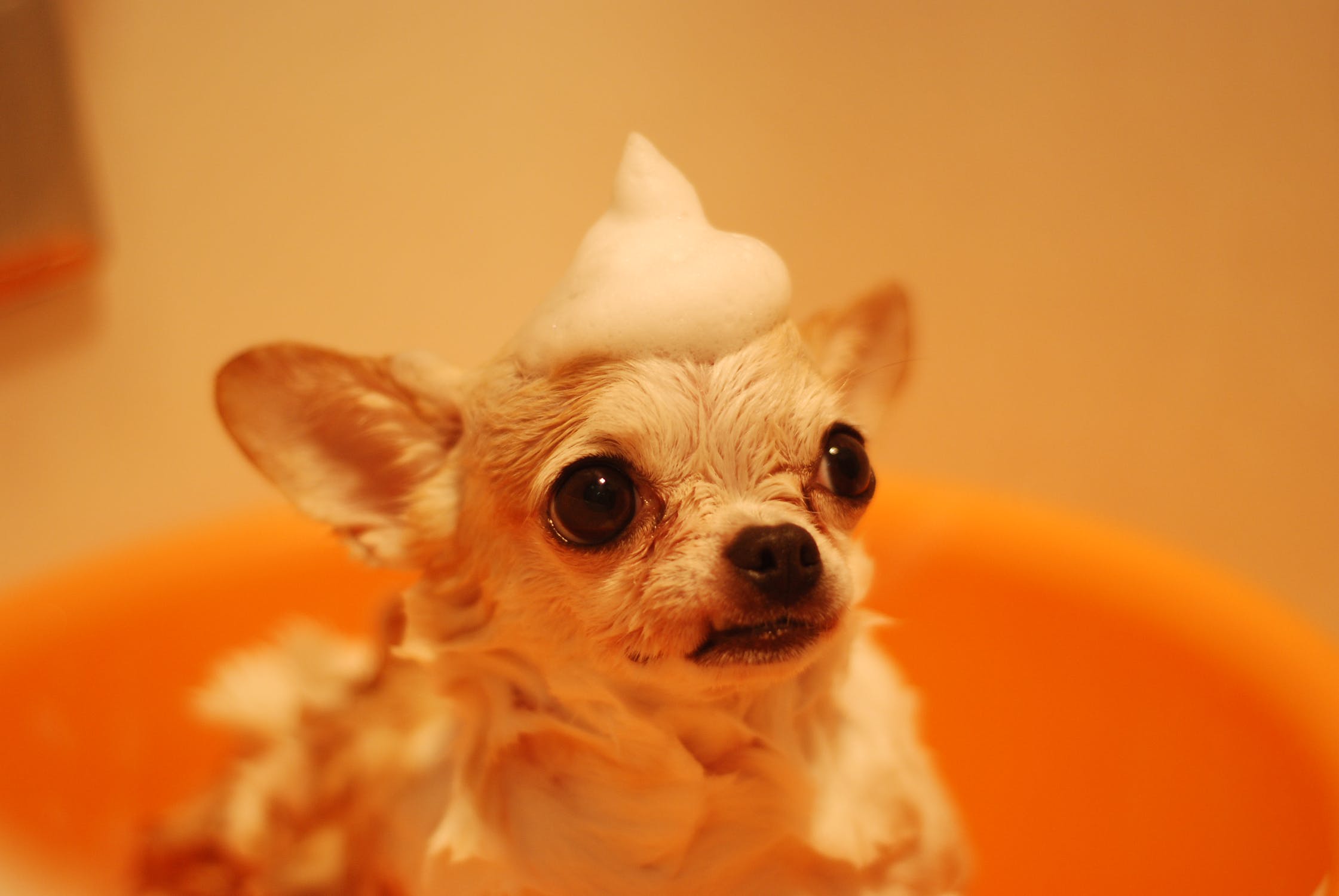Since the COVID-19 pandemic has shut down non-essential services, many dog owners have found themselves without the ability to have their dog properly groomed. While this may seem like a difficult challenge at first, with a little practice, grooming your dog at home can become a great way to bond. And it also saves you money. When going to the groomer isn’t an option, here are the top tips and tools for at-home dog grooming.
Brushing
Before you do anything else, brush your dog’s fur. Brushing loosens extra fur and removes dirt. Plus, it also cuts down on shedding. Get the best brushing with tools that are right for your dog’s coat. You may also need:
- comb
- scissors
- curry brush
- shedding blade
- bristle brush
- mat and tangle remover
- pin brush
Pro Tip: When it comes to matted fur, if you can’t get a comb through the tangles, take a pair of scissors and cut them out.
Bathing
Dog baths can get a little messy, but fortunately, you don’t have to do it as often as you might think (your dog likely appreciates that, too). Depending on your dog’s coat and what they get into, many breeds can go more than a month between baths. First, you need to decide where you want to bathe your dog— inside or outside. Next, you’ll want to get the right supplies like:
- Waterproof collar and leash (if washing outside)
- Shampoo and conditioner
- Brush or comb
- Towels
- Treats
Pro Tip: Be sure to dry out your dog’s ears after a bath with a pad. Avoid using cotton swabs, as they tend to push dirt further into the ear, sometimes leading to a painful punctured eardrum.
Hair Cutting
Cutting your dog’s hair seems to be the most anxiety-producing task for home grooming beginners. No one wants to accidentally give Fido a bad haircut, or worse, unintentionally hurt them. Take your time learning to cut your dog’s hair and just accept the fact now that you will make mistakes at first. Keep those errors to a minimum by understanding the tools you are using, such as:
- Hair clippers: The easiest way to get an even all-over trim. However, if you have a dense-coated dog, like a Husky, a shedding rake will work better than clippers.
- Scissors: Start at the front and work toward the back, using your fingers as guides. Remember, it’s always safest to leave their hair a little longer.
- Thinning shears: Areas that have really thick fur or tend to get matted should be tackled with thinning shears first.
Pro Tip: If your dog starts getting anxious or scared, try using clippers that are silent. The loud noise of the motor can sometimes be the cause of all the fear and worry. Many dogs actually find they enjoy a nice trim when the sound isn’t a factor.
Trimming Nails
Trimming your dog’s nails is an essential part of any DIY dog grooming routine. However, it’s also one of the most anxiety-producing—for the owners, too! The fear of cutting nails too short and injuring your canine weighs heavily on many pet owners. Fortunately, the right tools can alleviate your worry, including the following:
- Nail grinders: These rotary sanding tools are compact, safe, and effective alternatives to clipping dog’s nails.
- Nail clippers: Look for a pair that has sharp blades made from good stainless steel, with locking blades and safety stop features.
Pro Tip: Have some styptic powder on hand just in case you do accidentally nip the nail too close to the quick. This blood-clotting powder will help stop the bleeding.
Whatever your reason for exploring home grooming, it’s a great idea to build trust and companionship with your dog. DIY grooming can also turn into a fun hobby, becoming a good way to spend time while saving money.

